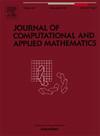混合黄油花算法:一种新的元启发式优化算法
IF 2.6
2区 数学
Q1 MATHEMATICS, APPLIED
Journal of Computational and Applied Mathematics
Pub Date : 2025-10-10
DOI:10.1016/j.cam.2025.117148
引用次数: 0
摘要
本研究提出了混合黄油花算法(HBFA),这是一种创新的元启发式优化方法,它结合了向日葵优化算法(SOA)和蝴蝶优化算法(BOA)的优点,以提高收敛速度、准确性和鲁棒性。虽然精通探索,但SOA可能缺乏快速融合所需的积极开发,这可能会减慢解决方案的改进速度。然而,在具有挑战性的环境中,BOA可能会经历过早的收敛,从而导致局部最优的延迟。HBFA通过将SOA独特的探索细微差别与BOA的有效开发技术相结合来应对这些挑战,确保了圆形搜索和本地化搜索之间的最佳交换。对该算法进行了23个单峰和多峰标准函数和6个具有实际应用的约束机械设计优化问题的评估。基于最佳解决方案、平均解决方案和收敛速度等指标,HBFA的性能与九种最先进的优化方法(包括PSO、SSA和HSA)进行了基准测试。结果表明,HBFA达到了最高的性能效率(96.69%),与传统方法相比,其改进幅度从21%到63%。值得注意的是,所提出的HBFA在寻找最优解方面比其他算法快83.25%,而不会出现过早收敛和局部最优。通过Wilcoxon sign -rank和Friedman统计检验进一步验证HBFA的优越性,平均p值为3.14E-10,具有统计学显著性优势。由于其自适应特性和快速收敛性,HBFA成为解决工程、人工智能和工业应用中复杂优化挑战的强大工具。本文章由计算机程序翻译,如有差异,请以英文原文为准。
Hybrid butter-flower algorithm: Novel metaheuristic optimization algorithm
This study presents the Hybrid Butter-Flower Algorithm (HBFA), an innovative metaheuristic optimization approach that combines the strengths of the Sunflower Optimization Algorithm (SOA) and the Butterfly Optimization Algorithm (BOA) to improve convergence speed, accuracy, and robustness. While proficient in exploration, SOA may lack the aggressive exploitation required for swift convergence, potentially slowing down solution refinement. However, BOA might experience premature convergence in challenging milieu that results in demurrer in local optima. HBFA handles these challenges by amalgamating SOA’s unique exploration nuances with BOA’s effectual exploitation techniques, assuring an optimum exchange between orbicular and localized search. The algorithm is assessed on 23 unimodal and multimodal standard functions and six constrained mechanical design optimization problems with real-world applications. The performance of HBFA is benchmarked against nine state-of-the-art optimization methods, including PSO, SSA, and HSA, based on metrics such as best solution, average solution, and convergence rate. The results demonstrate that HBFA attains the highest performance efficiency (96.69 %), accomplishing all competitive algorithms by epochal margins, with amelioration ranging from 21 % to 63 % over conventional approaches. Notably, the proposed HBFA is 83.25 % faster in finding the optimal solution than other algorithms without falling for premature convergence and local optima. The superiority of HBFA is further validated through Wilcoxon signed-rank and Friedman statistical tests, with an average p-value of 3.14E-10, confirming its statistically significant advantage. Given to its adaptive nature and rapid convergence, HBFA emerges as a powerful tool for addressing complex optimization challenges in engineering, artificial intelligence, and industrial applications.
求助全文
通过发布文献求助,成功后即可免费获取论文全文。
去求助
来源期刊
CiteScore
5.40
自引率
4.20%
发文量
437
审稿时长
3.0 months
期刊介绍:
The Journal of Computational and Applied Mathematics publishes original papers of high scientific value in all areas of computational and applied mathematics. The main interest of the Journal is in papers that describe and analyze new computational techniques for solving scientific or engineering problems. Also the improved analysis, including the effectiveness and applicability, of existing methods and algorithms is of importance. The computational efficiency (e.g. the convergence, stability, accuracy, ...) should be proved and illustrated by nontrivial numerical examples. Papers describing only variants of existing methods, without adding significant new computational properties are not of interest.
The audience consists of: applied mathematicians, numerical analysts, computational scientists and engineers.

 求助内容:
求助内容: 应助结果提醒方式:
应助结果提醒方式:


